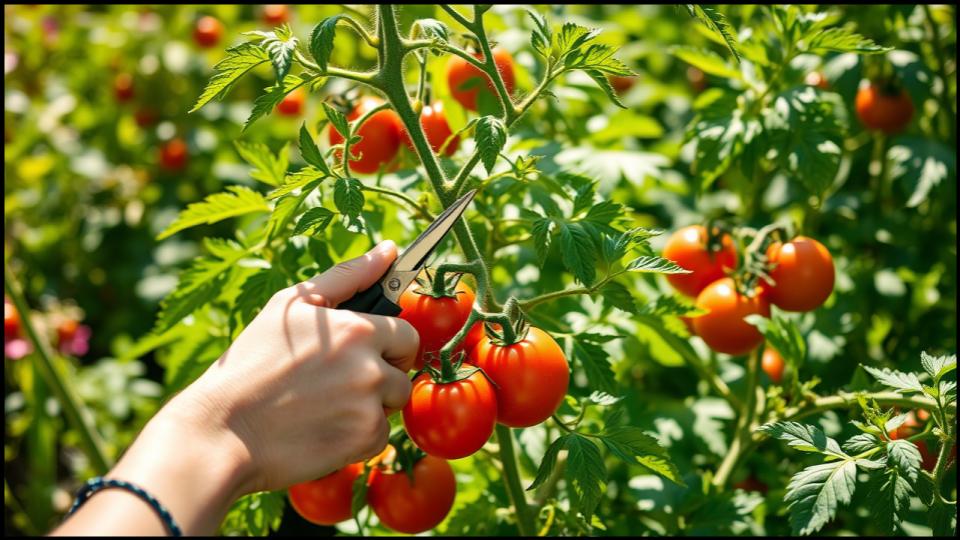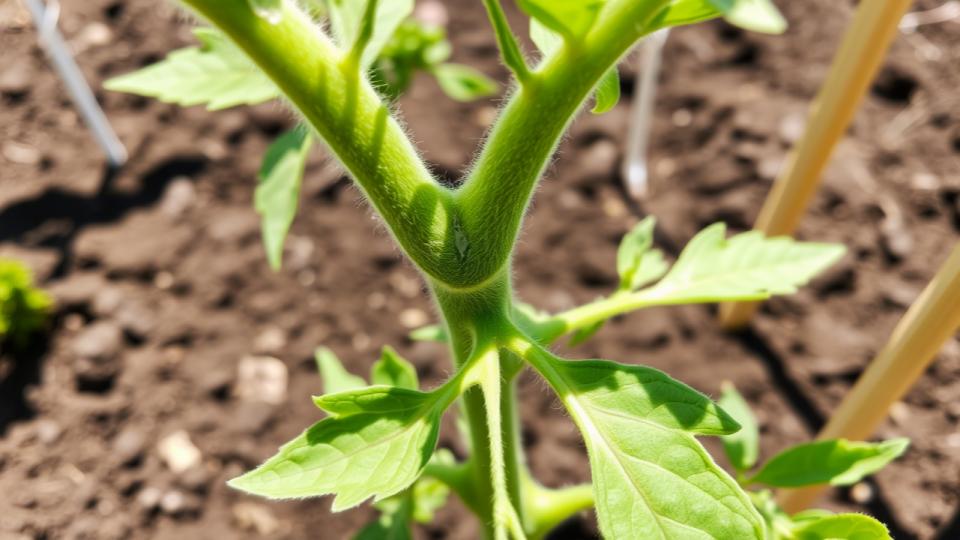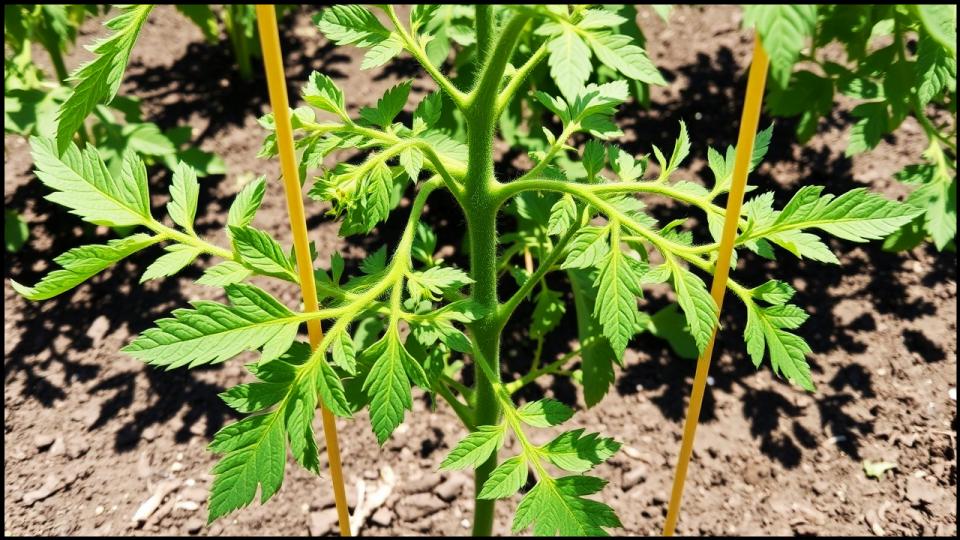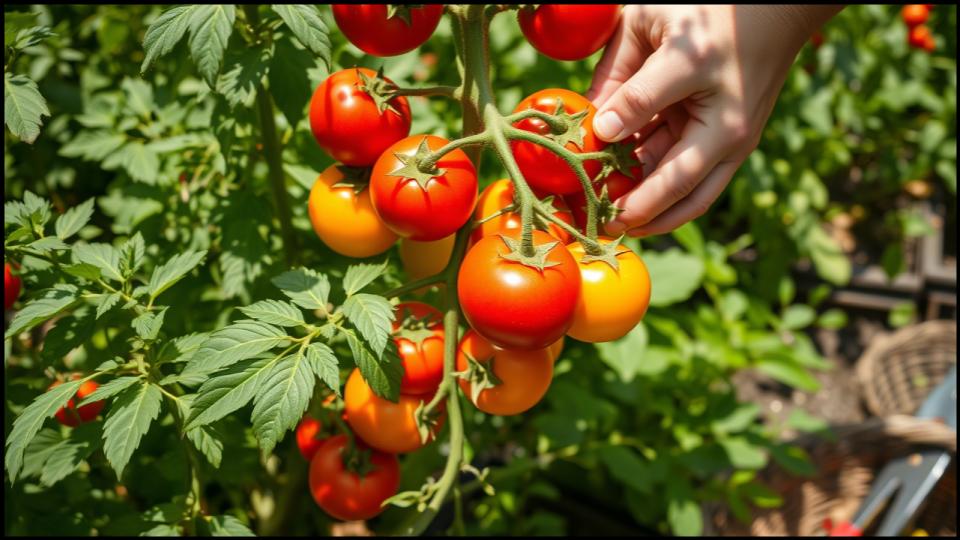
There’s a certain magic in stepping into your garden on a warm summer morning, the air alive with the buzz of bees and the sweet, earthy fragrance of ripe tomatoes. For many of us, cultivating these ruby-red gems is a cherished ritual. But to truly elevate your tomato harvest from simply good to absolutely spectacular, there’s a simple yet profound technique that makes all the difference: tomato pruning. This isn’t just about tidying up your plants; it’s about intentionally guiding their energy to produce the most vibrant, flavorful, and healthier tomato plants imaginable. Prepare to discover how a few thoughtful snips can lead to bigger tomato yields and a truly impressive bounty.
Quick Tips for Luscious Tomatoes
Short on time? Here’s what you need to know for successful tomato pruning:
- Know Your Type: Identify if your tomatoes are determinate (bushy, fruit ripens at once) or indeterminate (vining, fruits all season). Pruning needs vary significantly.
- Sucker Savvy: Regularly remove suckers (the small shoots between the main stem and branches) on indeterminate varieties to direct energy to fruit production.
- Low Leaf Logic: Prune leaves below the first fruit cluster to improve air circulation and reduce the risk of soil-borne diseases.
- Tool Purity: Always use clean, sharp pruners or snips to make precise cuts and prevent spreading diseases.
- Timing is Key: Prune when plants are dry to minimize the risk of fungal infections.
Why Tomato Pruning is Your Secret Weapon for a Dream Harvest
You might wonder if tomato pruning is truly necessary. After all, tomato plants will produce fruit even if left to their own devices. However, by strategically pruning, we can significantly improve both the health of the plant and the quality and quantity of its fruit. Think of it as curating your plant’s energy. Unpruned indeterminate tomato plants, in particular, can become a tangled jungle of leaves and stems, leading to a few common issues.
Firstly, dense foliage reduces airflow. This creates a humid environment around the leaves, which is an open invitation for fungal diseases like early blight or septoria leaf spot. As a seasoned gardener, I’ve seen firsthand how quickly these diseases can take hold in an overgrown patch, leading to blemished fruit and weakened plants. Proper pruning allows sunlight and air to penetrate the plant, keeping the foliage drier and promoting healthier tomato plants. According to the University of Minnesota Extension good air circulation is a key factor in preventing common tomato diseases.
Secondly, by removing unnecessary vegetative growth, particularly suckers on indeterminate types, you direct the plant’s energy towards developing larger, more flavorful fruit, ultimately leading to bigger tomato yields. Instead of fueling countless leaves and stems, the plant can concentrate its resources on ripening the existing tomatoes. It’s a simple principle: less competition for resources means better quality for what remains.
Finally, pruned plants are often easier to manage, stake, and harvest. Navigating a dense thicket to find that perfectly ripe tomato can be a frustrating endeavor, not to mention the increased likelihood of pests hiding amongst the foliage.
Know Your Tomatoes: The First Step to Pruning Prowess
Before you make a single cut, it’s absolutely crucial to understand what type of tomato plant you’re nurturing. There are two main categories, and their pruning needs are quite different.
- Determinate Tomatoes: These are often described as “bush” varieties. They grow to a predetermined (hence “determinate”) size, set their fruit all at once over a few weeks, and then their production wanes. Think of varieties like ‘Celebrity’, ‘Roma’, or ‘Rutgers’. For pruning determinate tomatoes, the approach is generally hands-off. They require very little pruning, perhaps just removing any leaves that are touching the soil or any damaged or diseased foliage. Excessive pruning can actually reduce your harvest, as fruit develops on the ends of the branches.
- Indeterminate Tomatoes: These are the vining types that continue to grow, flower, and produce fruit throughout the entire growing season until killed by frost. Popular indeterminate varieties include ‘Early Girl’, ‘Big Boy’, ‘Brandywine’ (one of my personal favorite heirloom tomato varieties for its incredible flavor), and most cherry tomatoes. Pruning indeterminate tomatoes is where the real art comes in. These varieties benefit significantly from regular pruning to control their vigorous growth, improve fruit production, and maintain plant health.
A common oversight I observe among enthusiastic new gardeners is treating all tomato plants the same. Understanding whether you have a determinate or an indeterminate variety, usually found on the seed packet or plant tag, is truly the cornerstone of successful tomato pruning. If you’re unsure, observe its growth habit: if it keeps reaching for the sky and producing new flowers along its main stems, it’s likely indeterminate.
Gathering Your Tools: The Well-Equipped Tomato Gardener
Having the right tools not only makes the job easier but also helps protect your plants. For tomato pruning, you don’t need an arsenal, just a few quality essentials.
TOOLS AND MATERIALS BOX:
- Bypass Pruners or Sharp Snips: Ensure they are impeccably clean and razor-sharp for precise, clean cuts that heal quickly. My go-to for years has been a sturdy pair of Felco pruners, but any high-quality bypass pruner will serve you well. Avoid anvil pruners, as they can crush tender stems.
- Gardening Gloves: Tomato plants have a distinctive, slightly sticky sap that can irritate some people’s skin, and the fine hairs on the stems can be prickly. A comfortable pair of gloves is a must.
- Rubbing Alcohol or a 10% Bleach Solution: This is for disinfecting your tools. It’s vital to wipe down your pruner blades with alcohol or dip them in a bleach solution (1 part bleach to 9 parts water) before you start pruning and especially between plants. This simple step, as highlighted by many horticultural institutions like the Clemson Cooperative Extension Home & Garden Information Center, is crucial in preventing the spread of diseases.
- Small Bucket or Trug: Keep this handy for collecting all the pruned foliage. Never leave trimmings on the ground around your plants, as this can attract pests and harbor diseases. Keeping the garden tidy is part of good tomato plant care.
- (Optional) Soft Plant Ties or Clips: If you are training your indeterminate tomatoes to a stake, trellis, or cage, you might need these to gently secure the main stem as it grows, especially after you’ve pruned away some of its natural supports.]
The Art of Tomato Pruning: A Step-by-Step Guide to Nurturing Abundance
With your tools at the ready and an understanding of your tomato type, it’s time to embrace the pruning process. It’s a practice that becomes more intuitive with experience, but these steps will guide you.

When to Begin Pruning
Generally, you’ll start pruning your indeterminate tomato plants when they are about 12 to 18 inches tall and have begun to produce suckers. Determinate varieties, as mentioned, need little to no pruning beyond removing ground-level leaves.
Identifying and Removing Suckers (The Main Event for Indeterminates)
This is the most significant part of pruning indeterminate tomatoes. Suckers are the small shoots that emerge in the “axil” – the V-shaped junction where a side branch (leaf stem) meets the main stem. If left to grow, these suckers will develop into full-sized stems, complete with their own flowers and fruit. While this might sound like a good thing, it often leads to an overly dense plant with smaller fruit and increased disease risk.
- Why Remove Them: Removing suckers channels the plant’s energy into the main stem(s) and its developing fruits, leading to bigger tomato yields and often earlier ripening.
- How to Remove: When suckers are small and tender (less than 2-3 inches long), they can usually be removed easily by pinching them off with your fingers. Simply grasp the sucker at its base and bend it back and forth until it snaps cleanly. For thicker suckers, use your sharp, clean pruners to make a cut flush with the main stem. I always advise pinching suckers when they are small; it’s less of a shock to the plant and, honestly, quicker for the gardener. Try to do this weekly during periods of active growth.
Pruning Lower Leaves for Health and Vigor
Once your tomato plants are established and have set their first cluster of fruit, it’s wise to remove the leaves below this fruit set. These lower leaves are the oldest and often the first to show signs of fungal diseases splashed up from the soil during rain or watering.
- Benefits: Removing these leaves improves air circulation around the base of the plant, reduces the likelihood of soil-borne pathogens infecting the foliage, and can even deter some pests. This is a key strategy for maintaining healthier tomato plants.
- How to Do It: Simply snip these lower leaves off close to the main stem with your pruners. Aim to have about 6-12 inches of bare stem from the soil line up to the first leaves, depending on the plant’s size.

Topping for a Timely Harvest (Primarily for Indeterminate Varieties)
“Topping” involves cutting off the top of the main stem(s) of indeterminate tomato plants. This is typically done towards the end of the growing season, about 3-4 weeks before your average first frost date.
- Why Do It: By removing the growing tip, you signal the plant to stop producing new flowers and foliage and instead divert all its remaining energy into ripening the fruit already on the vine. This can be especially helpful in climates with shorter growing seasons to ensure you get a good harvest before frost arrives.
- How to Do It: Using your pruners, simply snip off the top of each main growing stem, usually above the last fruit cluster that you think has a reasonable chance of ripening.
Special Considerations for Pruning Determinate Tomatoes
As we’ve discussed, pruning determinate tomatoes is a much simpler affair. Generally, the only pruning recommended is to remove any leaves or stems that touch the ground to prevent disease. You might also remove any obviously diseased or damaged foliage. Refrain from removing suckers or topping determinate plants, as this will reduce your harvest.
Pruning Strategies for Your Specific Tomato Goals
Beyond basic pruning, you can tailor your approach to encourage specific outcomes. For instance, if you dream of those giant, prize-winning tomatoes (often from heirloom tomato varieties), you might train your indeterminate plants to a single main stem. This involves diligently removing all suckers. The plant then pours all its energy into the fruit on that one stem, resulting in fewer but exceptionally large tomatoes. This is a technique I use for my ‘Brandywine’ and ‘Beefmaster’ plants, and the results are always impressive – it truly leads to bigger tomato yields per fruit.
Alternatively, allowing two or three main stems (by letting one or two of the lowest, most vigorous suckers develop) can provide a balance between fruit size and overall yield. This is a common and effective method for most home gardeners. The key is consistency and observing how your chosen varieties respond.
Common Tomato Pruning Pitfalls (And How to Gracefully Avoid Them)
Even with the best intentions, a few common mistakes can crop up. Here’s how to sidestep them:
- Over-Pruning (Especially Determinates): Enthusiasm is wonderful, but resist the urge to prune too heavily, particularly on determinate varieties where you might be cutting off future fruit. For indeterminates, ensure you leave enough foliage to protect fruit from sunscald and to power photosynthesis. Remember, those leaves are the plant’s energy factories.
- Pruning When Plants Are Wet: This is a cardinal sin in my gardening book! Wet foliage makes it much easier for fungal and bacterial diseases to spread from plant to plant on your hands or tools. Always prune when the leaves are dry.
- Using Dull or Dirty Tools: Dull tools crush stems rather than making clean cuts, inviting disease. Dirty tools are notorious for spreading pathogens. Always clean and sharpen your pruners.
- Not Knowing Your Variety: As emphasized, pruning an indeterminate like a determinate (or vice-versa) will lead to disappointment. Knowledge is power!
- Letting Suckers Get Too Large: While you can prune larger suckers, it creates a larger wound on the plant, takes more energy from the plant before removal, and is harder to do cleanly. Early and regular attention is best. A common mistake I see is gardeners waiting too long, and then the task feels overwhelming. Little and often is the mantra here.
Seasonal Nuances: Timing Your Pruning Throughout the Growing Season
Effective tomato pruning isn’t a one-and-done task; it’s an ongoing conversation with your plants throughout their lifecycle.
- Early Season (After Planting to First Fruit Set): This is when you’ll establish your plant’s structure. For indeterminates, begin removing suckers once the plant is about a foot tall. Remove any lower leaves that touch the soil.
- Mid-Season (Active Growth and Fruiting): Continue to remove suckers on indeterminate varieties every week or so. Monitor for any diseased or yellowing leaves and remove them promptly. If foliage becomes extremely dense, you can selectively thin out a few leaves (not suckers) from the center of the plant to improve air circulation, but do this sparingly. This is also when good tomato plant care, like consistent watering and feeding, complements your pruning efforts.
- Late Season (As Harvest Winds Down): For indeterminate varieties, this is the time to “top” the plants, typically about 30 days before the first expected frost. This encourages the remaining green tomatoes to ripen. Continue to remove any diseased foliage.
A Harvest of Beauty and Flavor Awaits

Mastering the art of tomato pruning is truly one of the most rewarding skills a home gardener can cultivate. It’s a simple practice that, with a little understanding and consistency, transforms your tomato patch from a potentially unruly sprawl into an orderly, productive, and beautiful space. By guiding your plants’ energy, you’re not just aiming for bigger tomato yields; you’re nurturing healthier tomato plants that are more resilient and capable of producing the most succulent, sun-ripened fruits imaginable.
In my own garden, the moments spent tending to my tomatoes, carefully selecting which suckers to remove, are almost meditative. It’s a connection to the plant, a gentle shaping that yields such delicious rewards. So, take these insights, step into your garden with confidence, and get ready to witness the remarkable difference that thoughtful tomato pruning can make. Your taste buds, and indeed your spirit, will thank you for it.
